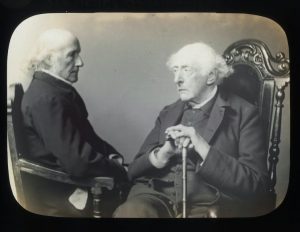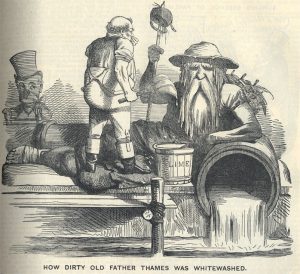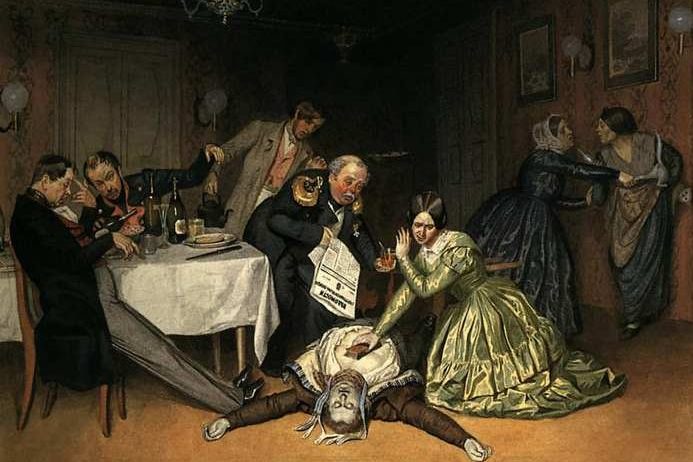Oxford early sewage disposal
In 18th century Britain, many towns underwent rapid expansion, which resulted in widespread public concern around the appearance of urban surroundings. In Oxford, one such issue was the draining systems and sewage disposal, which before the late 18th century, mainly involved collection from domestic cesspits and drainage via open gutters, often in the middle of the streets. During the 15th and 16th centuries, the council was not very successful in tackling the increasing issue of drainage, resulting in frequent amercements (financial penalties imposed either by courts or peers) by the commission responsible for sewers. City drains and watercourses were considered at the time to be ‘open sewers’, a subject which was often complained about by inhabitants. Between 1700 – 1840, parliament passed approximately 600 Private Acts of Parliament, which at the time was the usual method of initiating infrastructure-related improvements, in which inhabitants were granted powers to undertake such projects. For Oxford, the appointment of the Paving Commissioners under the Oxford Improvement Act of 1771, marked the beginning of significant changes to its infrastructure. The city’s sewage and drainage were considerably improved between the years of 1778 and 1806, with several covered drains being built or repaired. However, most of the sewers still discharged straight into rivers, many above the waterworks site at the Folly Bridge, which proved to be a great issue pertaining to the cholera outbreaks of 1832, 1849, and 1854.
Cholera outbreaks in Oxford
Cholera is caused by infection with the bacteria Vibrato cholera, its symptoms including diarrhea, nausea and vomiting leading to dehydration from fluid loss, lethargy, erratic heartbeat, sunken eyes and dry, shriveled skin, with a blueish hue. According to Dr W.P Ormerod, a surgeon at the Radcliffe Infirmary and a member of the Paving Commission, the first case of cholera was recorded in Oxford on June 24th, 1832. The first wave of the cholera outbreak lasted 19 weeks, infecting 184 people and killing 95. An independent Board of Health, with members from the city, university and parish was established, in response to the first outbreak. They worked alongside the Paving Commission, the latter of which became the official body responsible for sanitation duties related to the epidemic. Some elements of public health were addressed at this time by passing the Oxford Paving Act of 1835, which banned certain acts such as the slaughter of cattle in the streets, but this was not enough to counteract the prevalence of cholera and other water-borne diseases, such as dysentery, tuberculosis, typhoid fever, influenza, yellow fever, and malaria, among others.

Sir Henry Acland (L) and Dean Henry Liddell (R), by Sarah Angelina Acland, 1898. © History of Science Museum, University of Oxford. Inv. 18238.
Local doctors, such as Dr. Ormerod, linked the high mortality rates of the cholera outbreaks to the large open drains in the city. However, any new improvements to the city’s public health were hindered by conflicts related to individual responsibilities between the university, town, and commissions. Later, in 1856, Dr Henry Acland, medical professor, and public health advocate, would create maps recording cases of cholera and typhoid, as part of a wider campaign for sanitary reform, building on Dr. Ormerod’s work. The sanitary reform campaign was spearheaded by both university representatives, such as Acland, but also officials, such as Alfred Winkfield and Gilbert Child and William Henry White, Oxford’s chief engineer, at the time, representing a rare collaboration between town and gown. One such contributor of note from this group is Henry Liddell (whose daughter Alice is said to have inspired ‘Alice in Wonderland’), who at the time was the Dean of Christ Church College and used this influence to push for change alongside Acland by using the spectre of typhoid.
The City Council began considering implementing the Public Health Act of 1848, only after Parliament’s approval and threats of government-run health inspections. Between the years 1850 and 1873, multiple bodies were appointed and then re-appointed to no effect to survey the city’s drainage system, with conflicts arising around its state and the required improvements. In 1873, the first sewage contract was signed by all commissions involved, a sufficient sewage system only being completed in 1880.
London calling
Though the sewage situation during the cholera epidemics was dire in Oxford, London had to face a centuries’ long build-up of waste in the river Thames fermenting under a particularly scorching summer sun in 1858. This was known as the Great Stink. At first, the Parliament was reluctant to commit to reform, as they were aware that getting rid of the stench meant that great action was needed to alter the Thames infrastructure. However, to the benefit of denizens, lawmakers could not escape the stench themselves. The Prime Minister at the time, Benjamin Disraeli, famously described the river as ‘a Stygian pool reeking with ineffable and unbearable horror.’ They tried to relieve their senses by dousing the Parliament buildings curtains in a mixture of chloride and lime, to little effect.

“How Dirty Old Father Thames was Whitewashed”: a satirical comment on the state of the River Thames, from Punch magazine, 31 July 1858, page 41
They even considered moving Parliament and the Law Courts to Oxford, Henley or St. Albans, though this did not materialise in the end. On July 15th1858, Disraeli put forth appropriate legislation to refurbish Thames’ infrastructure and it became law in a record of 18 days. Joseph Balgazette, an English civil engineer was tasked with building a new, extensive sewage system in 1859, a process which marked the beginning of a long and slow return to a clean Thames.
Today, the sewage system, originally built to cope with a population growth between 3 and 4.4 million, is straining under the almost 9 million strong population of London. The Thames and its tributaries see tens of millions of tons of sewage, slurry and plastic pollution released into waterways yearly, placing public health and the environment at risk. The current solution proposed for infrastructure improvement consists of the Thames Tideway Tunnel, a 25km ‘Super Sewer’, the width of three London buses to intercept pollutants and return clean water, while generating more renewable energy. Work on the tunnel began in 2016 and it is projected to be finalised in 2024.
Written and researched by MOX volunteer Iulia Costache.
Want to write your own Oxford-inspired post? Sign up as a volunteer blogger.
Bibliography
Georgian improvement – UK parliament. (n.d.). https://www.parliament.uk/about/living-heritage/transformingsociety/towncountry/towns/overview/georgianimprovement/
Chance, E., Colvin, C., Cooper, J., Day, C. J., Hassall, T. G., Jessup, M., & Selwyn, N. (1979). A history of the county of Oxford: Volume 4, the city of Oxford. Victoria County History.
Oxford Paving Commissioners. OXFORD STATUTORY IMPROVEMENT AUTHORITIES – Archives Hub. (n.d.). https://archiveshub.jisc.ac.uk/search/archives/8c614018-37ef-39b3-b412-9e6f3b3ca4e7?component=20d4020a-7713-37e2-8b29-637274609bbd
Tulchinsky, T. H. (2018). John Snow, cholera, the broad street pump; waterborne diseases then and now. Case studies in public health, 77.
Science Museum. (2019, July 30). Cholera in victorian London. Public Health. https://www.sciencemuseum.org.uk/objects-and-stories/medicine/cholera-victorian-london
Public health. Ss Mary & John Churchyard::public health. (n.d.). http://www.ssmjchurchyard.org.uk/public_health.php
Killingsworth, L. B. (2018). Mapping Public Health in Nineteenth-Century Oxford. The Portolan, 7-21.
Vanderslott, S., Phillips, M. T., Pitzer, V. E., & Kirchhelle, C. (2019). Water and filth: reevaluating the first era of sanitary typhoid intervention (1840–1940). Clinical Infectious Diseases, 69(Supplement_5), S377-S384.
Claas Kirchhelle & Samantha Vanderslott (2023, March 1). Decades neglecting an ancient disease has triggered a health emergency around the world. The Conversation. https://theconversation.com/decades-neglecting-an-ancient-disease-has-triggered-a-health-emergency-around-the-world-121282
Lemon, J. (2023). The Great Stink. The great stink. https://www.choleraandthethames.co.uk/cholera-in-london/the-great-stink/?fbclid=IwAR2VHc-kTfIZnbk-5Qx7c3AILfGkCwZNRrLIjosiXEgA2Ep90dnffIsEAQ0
Koenig, C. (2012). Oxford Past Times: The Changing Face of City and County. Signal.
The Great Stink of 1858 – Steve Bruce. Exploring the Slum. (2016, November 30). https://slumexplorers.wordpress.com/the-great-stink-of-1858/?fbclid=IwAR0FUtn6Wdcfmu0rmtdqUiv9_P0jAM8YzvAboPqF5RxE1oVjF5VVVneHh4o



